To mark the 100th issue of 2nr, we've spent the last few weeks scouring through each and every issue of Import Tuner to show you, the reader, the best performance parts to find their way into the pages of Import Tuner over the years.
So many great products have filtered through our office that it was hard to narrow it down to a reasonable number. Since we can't fit them all in one issue, we've brought you the most innovative and trend-setting aftermarket performance products of the last 100 issues.
All of these products have had a great impact on what is available to the average consumer and what an enthusiast can do in their ride, and in their own way, guided the tuner market into the direction it's gone; offering more hardcore performance parts to the average consumer.
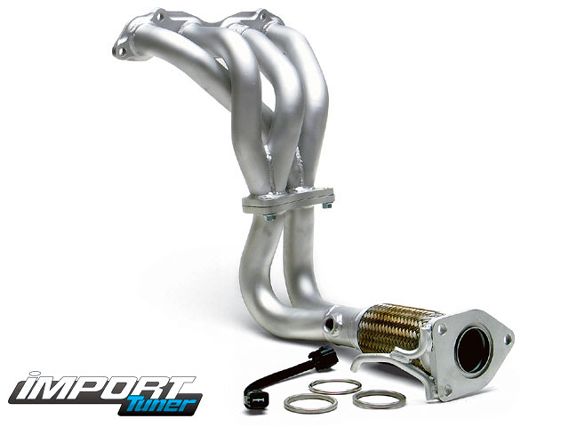 | Product Retro - Performance Parts Recap
| Product Retro - Performance Parts Recap
Aftermarket suspensions, engine internals, forced-induction kits, programmable engine management and wideband o2 sensors may have been around before 2nr hit the scene. But over the years, we've watched the once-astronomical prices on these gizmos come down to the level where the average consumer can pack the kind of power and suspension that was previously reserved for the wealthy. And thanks to these advancements, tuning has blossomed. These are good times for the tuner, and these parts are to thank for that.
One of the first to offer tuned headers for just about every popular platform, they've become a staple in the industry. DC Sports puts lots of research and development into their header designs and the outcome is a line of products that consistently make more power than stock and are durable. It's no wonder their headers have become an industry standard.
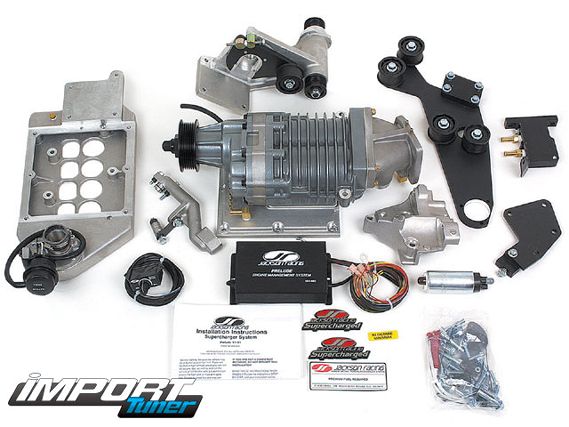 | Product Retro - Performance Parts Recap
| Product Retro - Performance Parts Recap
Modern, fuel-injected engines are a marvel of efficiency, and to reliably get more than 20 percent more horsepower out of them without expensive internal engine mods is extremely difficult and expensive, if not impossible. On the other hand, a mild forced-induction kit running 6-pounds of boost will make around 40 percent more power without sacrificing any drivability. So, it's no surprise that when Jackson Racing introduced a line of smog-legal supercharger kits, people snatched them up like hotcakes. The offerings started with kits for the Honda 88-91 CRX/Civic and 90-93 Miata, and the line quickly expanded to cover all the popular import platforms. Today, there is a Jackson blower for almost anything out there. For some cars, like the RSX and Civic, multiple kits are offered; with both street and race versions available. Jackson Racing helped show us that blowers aren't just for Chevys, and their ubiquitous line of superchargers finally gave us import guys the power to put those pesky V8 muscle cars in their place.
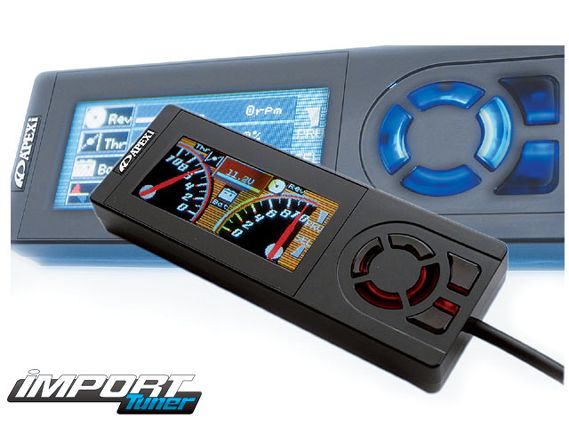 | Product Retro - Performance Parts Recap
| Product Retro - Performance Parts Recap
Before the days of the affordable air/fuel controller, leaning out or richening up the air/fuel ratio meant resorting to expensive standalone engine management systems, or hack methods like changing the base fuel pressure or injector sizes. While these methods may result in a car that runs, OK at full throttle, it will almost surely run like crap the rest of the time. The APEXi AFC was a godsend, because it allowed the average tuner to make adjustments to air/fuel ratios depending on engine load and speed. Proper air/fuel ratios are necessary to make all the power an engine is capable of, especially with mods like intakes, exhausts, etc. The AFC finally gave us the ability to tune for all operating conditions, not just full throttle. The AFC was designed to be straightforward and intuitive, and often does not require a professional to tune it (although it is recommended).
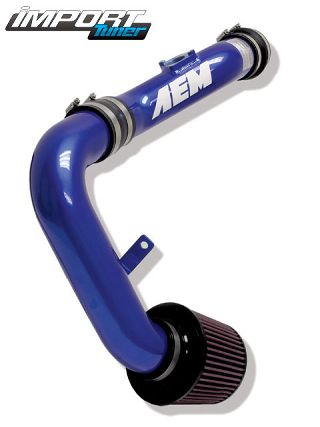 | Product Retro - Performance Parts Recap
| Product Retro - Performance Parts Recap
With at least one system for any tuner car you can think of, AEM's got the bases covered in the intake market. What sets them apart from all the other intakes out there? Making a quality intake isn't simply a matter of slapping a cone on a piece of tubing. There's a science to engineering an efficient intake and it takes lots of effort to be constantly improving product lines and coming out with even better products, and that's just what AEM does. Each intake is tested to actually make the power they claim. Not all intakes can make that claim.
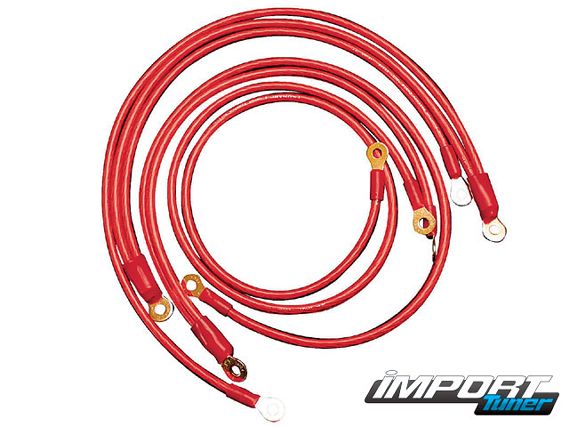 | Product Retro - Performance Parts Recap
| Product Retro - Performance Parts Recap
When these hit the market a few years ago, they were all the rage. And it's no wonder why. Costing less than a tank of gas and offering the promise of a few extra horsepower, it's hard to beat the bang-for-the-buck factor. Plus, any monkey can install them in no time. They work by providing better grounds to the engine and chassis, which helps the ECU receive and send clearer signals to and from the car's sensors and actuators, helping the ECU operate the engine more smoothly, hopefully resulting in increased power output. Cheap and easy power is truly timeless.
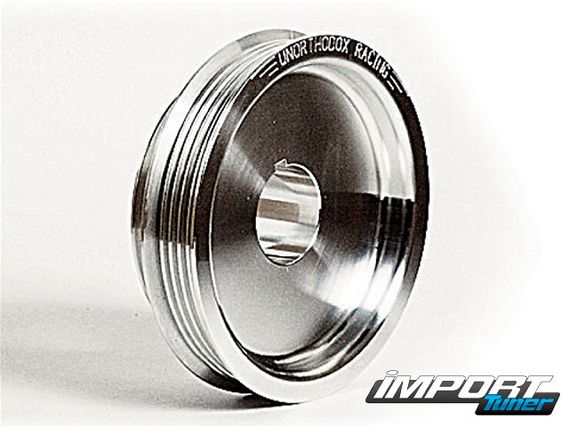 | Product Retro - Performance Parts Recap
| Product Retro - Performance Parts Recap
A popular upgrade since it hit the market,
these engine crank and accessory pulleys
(alternator, power steering, etc);
add cheap horsepower by spinning all the
accessories more slowly,
taking load off the engine
and adding power.
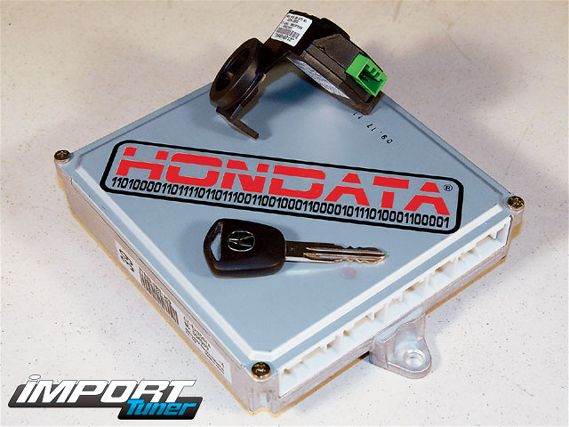 | Product Retro - Performance Parts Recap
| Product Retro - Performance Parts Recap
Like the AFC before it, the EMS is revolutionizing engine tuning. With the first plug-and-play standalone engine management system for multiple applications, gone are the days of hard wiring in a new ECU and swapping out all the stock sensors for whatever that particular ECU was designed to use. The flexibility of the ECU means it can do anything. With software that is constantly updated and an active Internet forum dedicated to tuning, AEM is there 24/7 to provide top-notch technical support for their EMSs, which makes all the difference when compared to other standalones.
 | Product Retro - Performance Parts Recap
| Product Retro - Performance Parts Recap
With the introduction of OBDII, tuning got a lot harder. While it's a breeze to throw an AFC on an OBDI car to do some mild tuning, it's a lot harder on OBDII cars.
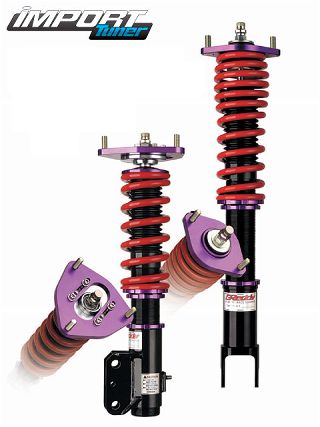 | Product Retro - Performance Parts Recap
| Product Retro - Performance Parts Recap
Suspension technology has come a long way since 2nr first hit the stands. Back in the day, rocking a set of stock dampers and some lowering springs was the typical "performance" setup. This almost always resulted in a car that looked good, but rode and handled like crap. Full coilover systems were available, but were so few and expensive that most enthusiasts couldn't find or afford them. Things have changed a lot since then. There are countless numbers of companies out there that offer affordable race-tuned coilovers. And the result is that we no longer have to suffer the poor ride quality and lousy handling of mismatched springs and dampers.
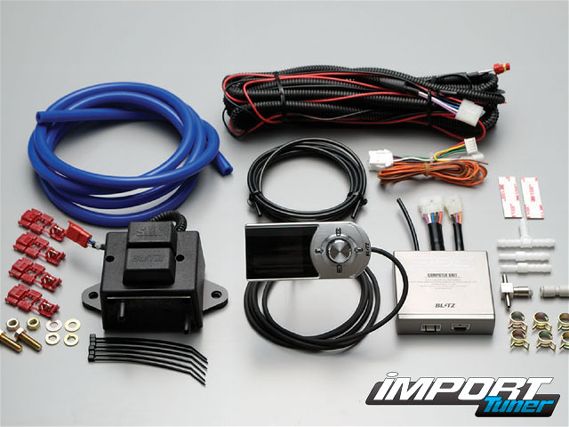 | Product Retro - Performance Parts Recap
| Product Retro - Performance Parts Recap
Before the days of the electronic boost controller, the manual boost controller ruled the earth along with the dinosaurs. While they worked, they were often inconsistent and caused issues with boost spikes. The electronic boost controller was a huge leap forward from the manual type. The problem with most electronic boost controllers is that they use solenoids that are too small, which can cause boost spikes just like the manual types. The Blitz uses two separate, beefy solenoids to eliminate boost spike and creep. Some people say size doesn't matter, but when it comes to boost-control solenoids, we know better from first-hand experience.
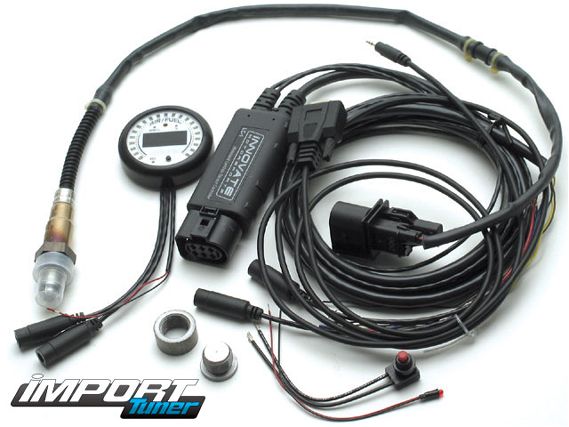 | Product Retro - Performance Parts Recap
| Product Retro - Performance Parts Recap
We've told you air/fuel controllers have revalorized tuning, but they're no good if you don't know what the air/fuel ratio is. A wideband 02 sensor is vastly superior to a standard narrow band sensor, which reacts too slowly and has too narrow of a range to tune with (almost all OEM o2 sensors are narrow band). Not too long ago, the cost of a wideband was close to that of a used car, which meant only shops could afford them. This meant a trip to the dyno every time a change is made to the engine or tuning to check the AFR. Since the price of WBo2 sensors dipped below $500, the average tuner can now tune without a trip to the dyno. And with dyno time costing around $80 an hour, a WBo2 will quickly pay for itself.
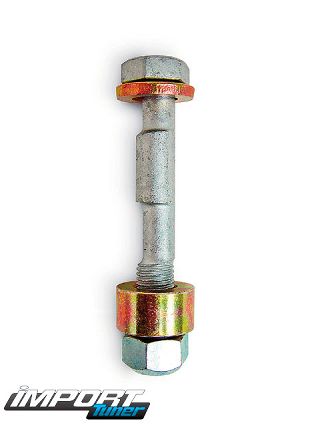 | Product Retro - Performance Parts Recap
| Product Retro - Performance Parts Recap
As anyone who has lowered their car significantly without re-setting the alignment (especially the camber) can tell you; it destroys tires. As a car is lowered, the wheels tilt in at the top. This is called "negative camber." While good for road racing, it will chew up the inside of the tires on a street-driven car in no time flat. Camber kits allow the camber to be set back to stock levels and prevent abnormal tire wear on the street. The best part is that when you go to the track, you can add some of that negative camber back in for more grip in the turns, and put it back to stock for the street.
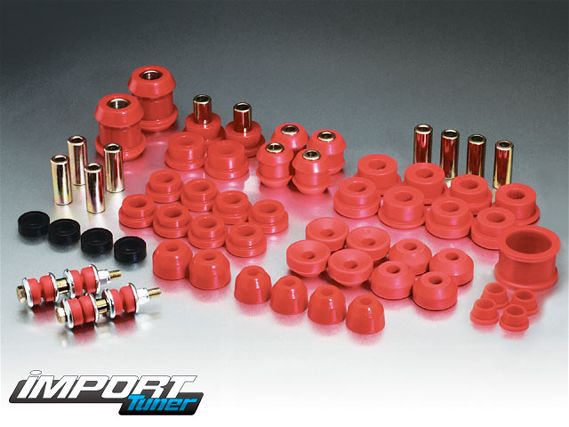 | Product Retro - Performance Parts Recap
| Product Retro - Performance Parts Recap
Without a proper foundation to work from, even the best suspension system is no good. Sway bars, coilovers and any other mods won't do much good without good bushings. Stock bushings are made of soft rubber and wear out quickly, leading to a sloppy suspension. Poly bushings are stiffer and provide a more solid base for all your suspension mods to work from, not to mention, last a lifetime.
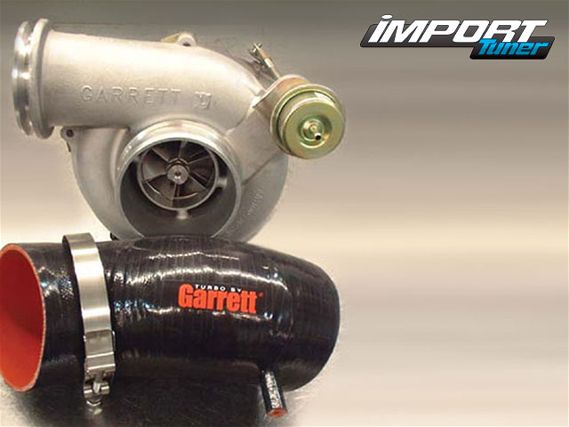 | Product Retro - Performance Parts Recap
| Product Retro - Performance Parts Recap
Not all turbos are not created equal. Many of the turbos out there are living on borrowed time. Based on 1940s technology, they aren't exactly models of efficiency. About 20 years ago, ball bearings were first on racecars with very impressive results. Able to spool more quickly, thanks to the lower friction if the ball bearings versus the older sleeve bearing technology, and still make more power, there's no arguing their inherent superiority over the older-style, sleeve-bearing turbos. Manufacturing costs kept the price of these killer turbos out of the price range of most people before, but prices have come down significantly in the recent past. Some ball bearing turbos now sell for around $1,000. It may sound steep compared to $600 for a similar sleeve-bearing turbo, but trust us; there really is no comparison.
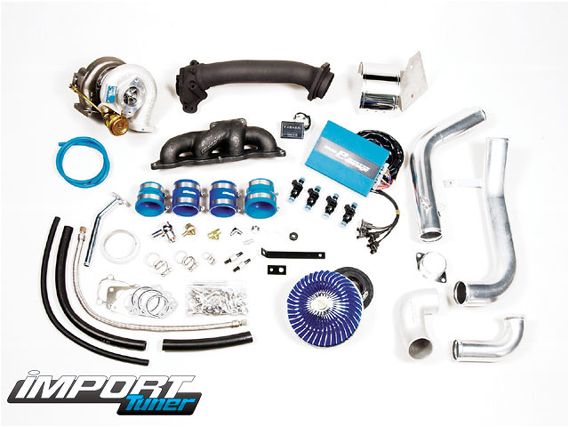 | Product Retro - Performance Parts Recap
| Product Retro - Performance Parts Recap
The Civic is undoubtedly the bread and butter of the aftermarket import world and GReddy was the first to offer a CARB-legal turbo kit for the ubiquitous Honda Civic. Before that, the options for forced-induction carried a hefty price tag and could get you into trouble with The Man. Since that first smog-legal Civic kit hit the streets, other companies have followed suit with their own offerings. But, this kit is the one that really got things rolling for Civic turbo kits. GReddy is still leading the charge for Civic turbo kits, with virtually all models included, including the newest Si.
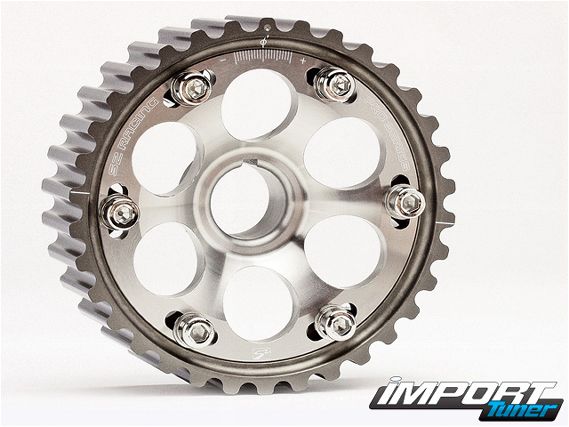 | Product Retro - Performance Parts Recap
| Product Retro - Performance Parts Recap
Thanks to these, anyone can be a tuner. How a camshaft is set up in relation to the crankshaft can have a noticeable effect on ultimate power output and what point in the RPM range the engine makes the most torque and power. Retarding the cams will move the power up in the RPM range and advancing it will move it down. If the engine is twin-cam, both can be adjusted to different settings (measured in degrees) for nearly infinite adjustability. Perfect for dialing in an engine for any conditions.
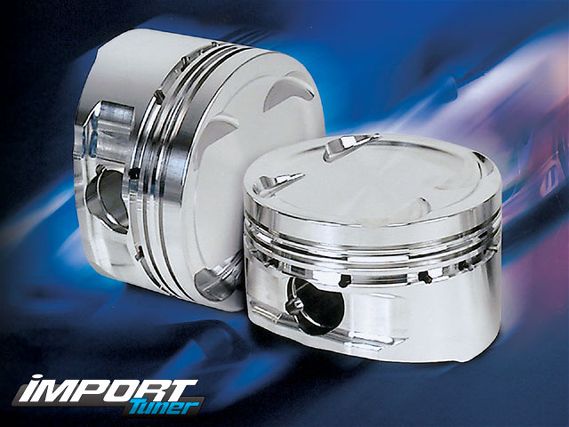 | Product Retro - Performance Parts Recap
| Product Retro - Performance Parts Recap
When the time comes to make serious power, it takes some seriously strong engine internals to handle the extreme forces. Most stock pistons and rods are made of cast aluminum, which is more porous and weaker than forged. In addition, forged internals can survive detonation better than cast pieces. Without these two things, building 500 wheel hp inline-fours simply wouldn't be possible.
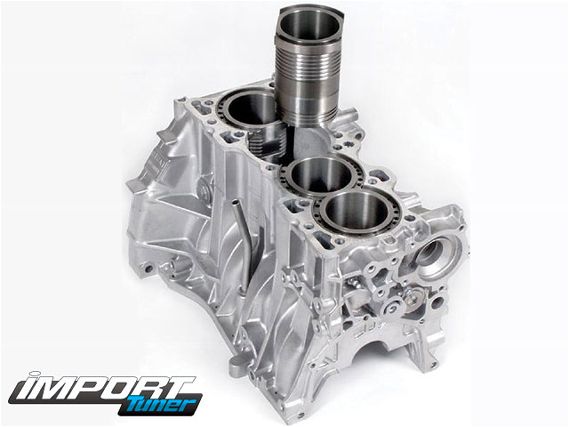 | Product Retro - Performance Parts Recap
| Product Retro - Performance Parts Recap
The sleeves in a stock Honda engine have their problems, Firstly; they don't leave much room for increasing displacement. A 1.8 Honda engine can only be punched out to around 2-liters with the stock sleeves, and at that level, they are more likely to break. Even at the stock displacement, stock sleeves are prone to breakage at high-horsepower levels. Aftermarket ductile sleeves have allowed people to make 500-plus wheel hp on 1.8-liter engines-something that just can't be done with the stockers.
